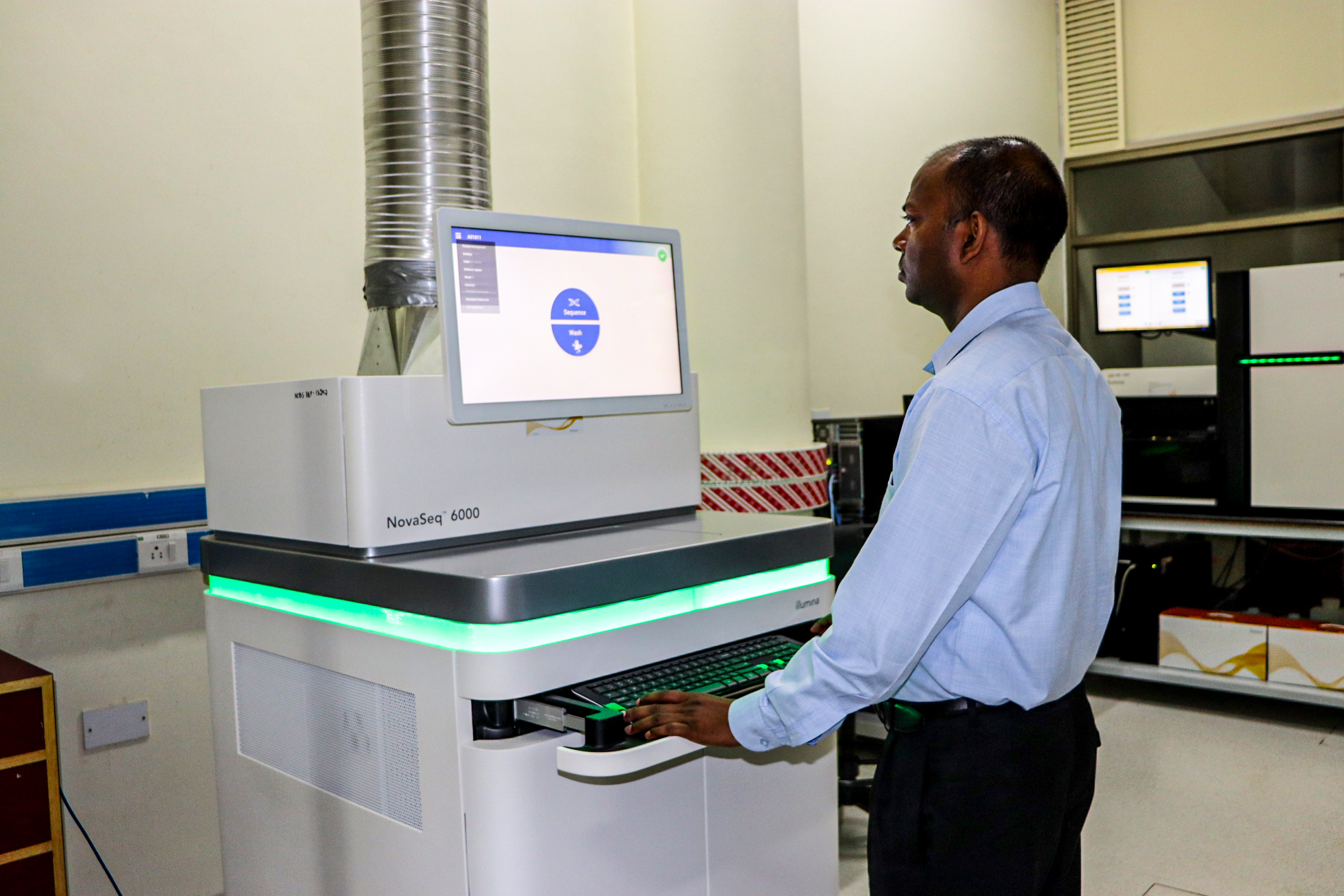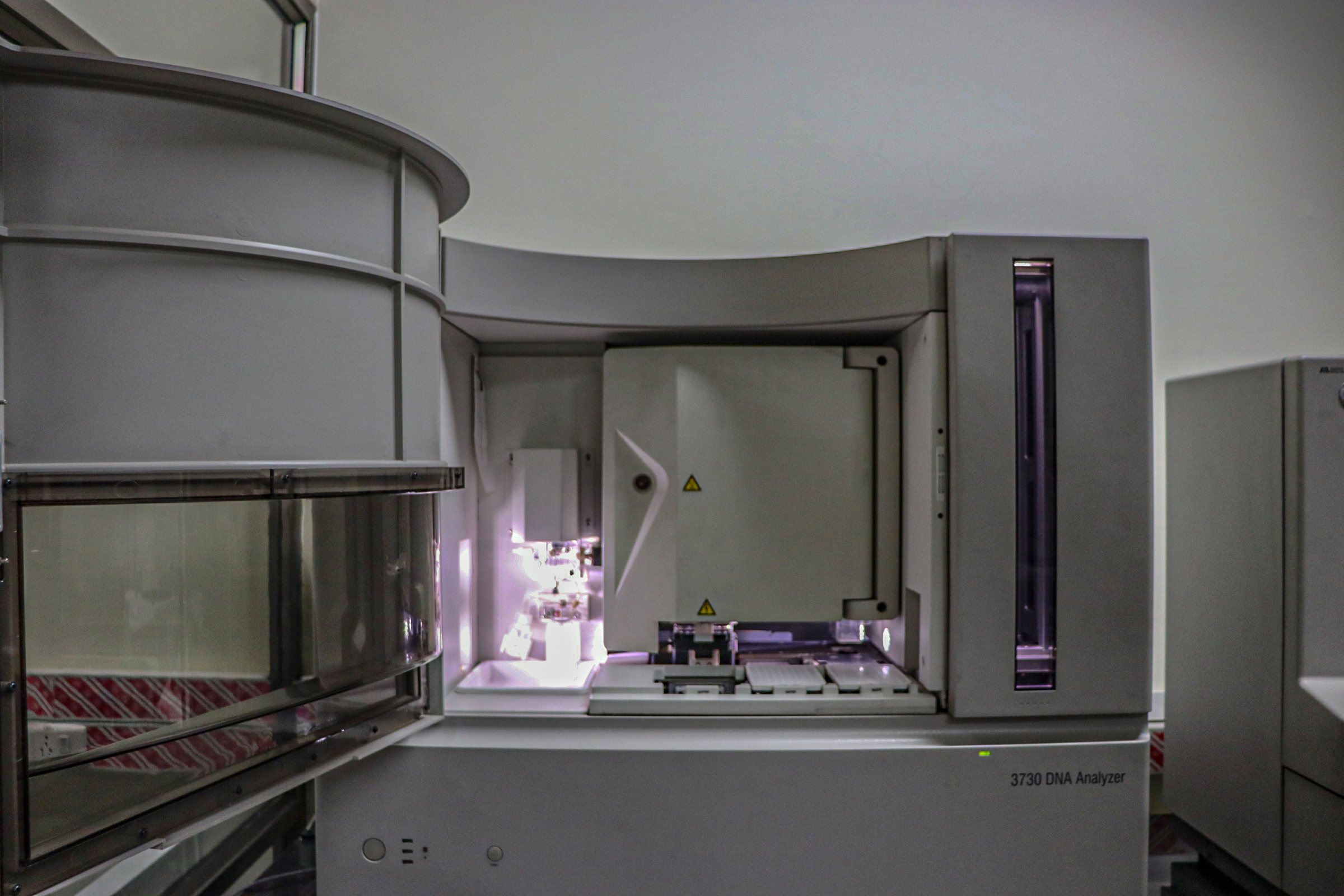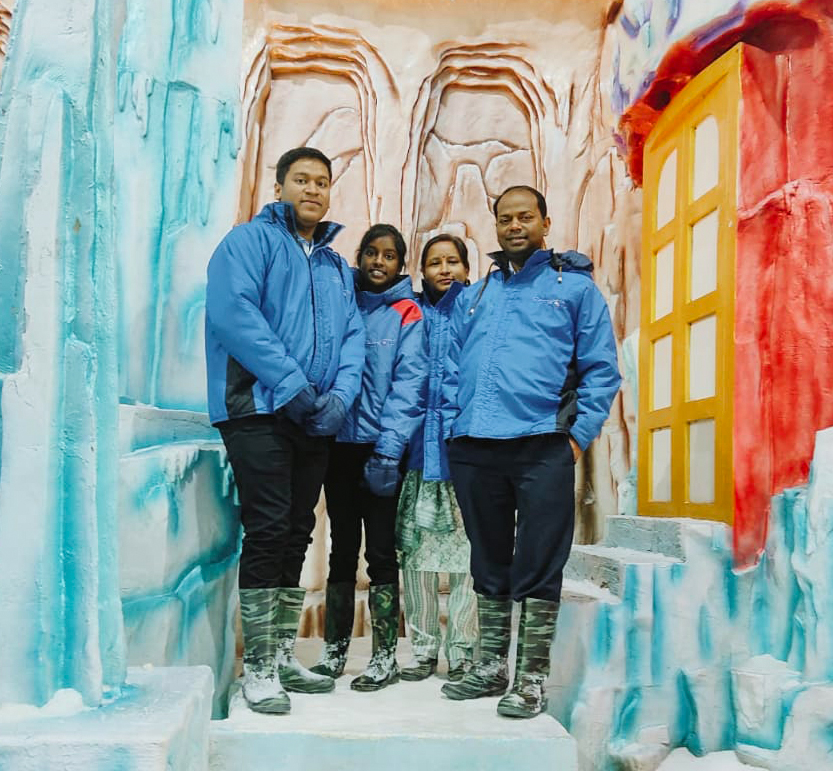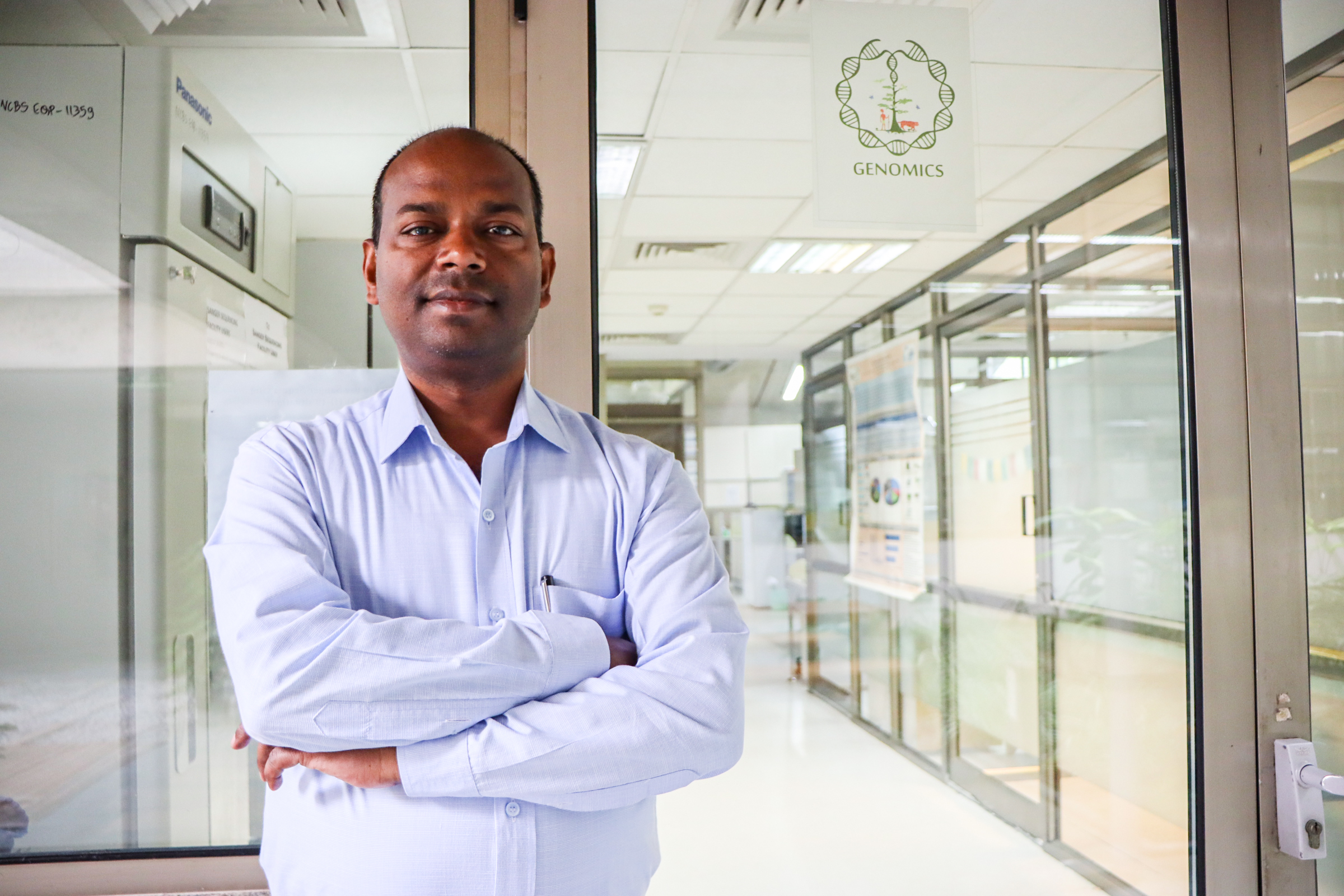Core facilities are an integral part of modern research. They provide not only unique resources and state-of-the-art capabilities but also technical expertise and experience so that a non-expert scientist can confidently perform specialized experiments and aim to move their research program in any new direction. Facilities serve as a nexus for collaborations, interdisciplinary research, and platforms for cost-effective innovation.
“Facilitating Research” is a series put together by Dr Deepti Trivedi, Head of Research Facilities, to explore what it requires to run a research facility at Bangalore Life Science Cluster. She will be talking to the Facility In-Charges of different facilities over the next few months.
Deepti Trivedi
Recent advances in genome sequencing have helped us not only to understand fundamentally how we are connected evolutionarily with various organisms but also to find out how mutations lead to specific genetic disorders. The field of genomics and transcriptomics are advancing at a phenomenal rate. The first human genome was sequenced at the cost of a billion USD, while now it is possible to do so for about 1000 USD. The first person I am interviewing is the Genomics facility head, Dr Awadhesh Pandit. Awadhesh has 20 years of experience in sequencing and is extremely passionate about his work. I chose this facility first also because I am a user and I am excited and curious about the brand new NGS platform (NovaSeq 6000) that they have recently acquired!
Hi Awadhesh, welcome to the series. Let me start this interview by asking you what the NGGF facility does?
Awadhesh Pandit
Thank you for organizing this interview. At the Next Generation Genomics Facility (NGGF), we provide sequencing services to scientists, train researchers and also work on national and international projects. NGGF has helped scientists across India to sequence genomes from a range of organisms. We perform services such as Sanger sequencing, Transcriptome, Exome, whole genome DNA sequencing, small RNA sequencing, ChIP sequencing and Metagenomics using Illumina sequencing platforms, like NovaSeq 6000 and the MiSeq. We also provide single-cell genomics services using 10x Genomics single-cell platform and Droplet Digital PCR (ddPCR) services.

Deepti Trivedi
As you said, in addition to BLiSC users, you also provide services to external users. So, what is the procedure for an external user to avail of your services? Can they write directly to you?
Awadhesh Pandit
External users should contact the Center for Cellular and Molecular Platforms (C-CAMP), our business partners, through services@ccamp.res.in. They can find all the relevant information on their website, where they can register and log in. There is an enquiry form on the website as well that is answered by our Business Development Manager. Technical questions are then directed to me, which can be discussed.
Deepti Trivedi
Since not many people might be experts, do you also provide services in the preparation of samples?
Awadhesh Pandit
Since the facility does not have the required clearances, we cannot accept tissue samples. The facility only accepts DNA and RNA samples isolated by the users. We do provide consultation services if they don't have the expertise in sample preparation and designing the NGS experiment.
Deepti Trivedi
That's really good to know. What are some of the achievements of the facility?
Awadhesh Pandit
That's a good question. The facility has sequenced around 35,000 samples for different NGS applications like the transcriptome, exome, whole genome DNA, small RNA, ChIP seq, ddRAD, 16s metagenomics, targeted amplicon sequencing using HiSeq2500 and the MiSeq sequencing platform in the last five years. Along with these services, the facility is also actively involved in the SARS-Cov-2 genome sequencing work. In the last two years, we have sequenced around 25,000 samples for INSACOG and Rockefeller projects. The first Omicron variant in India was confirmed from our facility, and the first community transmission of Omicron was reported by us from Bangalore. In addition to these, we have trained 231 internal and external users in different NGS applications. The facility has also improved the existing 16s metagenomics sequencing method by designing the heterogeneity spacer primers to increase the base complexity, which resulted in high-quality sequencing data generation without PhiX spike-in. We recently submitted this manuscript to the BMC genomics journal, and it's under review.
Deepti Trivedi
Amazing. What are these projects?
Awadhesh Pandit
INSACOG is a Government of India initiative to study the circulating SARS-Cov-2 variants in our population by genome sequencing. 54 National Institutes are participating in this, including our institute.
Deepti Trivedi
For this project, do you receive viral samples?
Awadhesh Pandit
On our campus, we have a COVID testing facility which receives the samples. RNA is isolated and converted to cDNA in that facility. This cDNA is amplified and sent to us. We start from there, like library preparation and then sequencing.
Deepti Trivedi
That's amazing. You must be generating tons of data. Do you also provide services in analyzing the sequencing data?
Awadhesh Pandit
Currently we do not provide data analysis services. We only provide raw data to the users in FASTQ format for NGS and ABI format for Sanger sequencing. Yeah, so a user has to do the analysis on their own. We do provide suggestions for open-source and commercial software if the user is interested to know. With these software, analysis is actually not very complicated to do these days and can be easily learned.
Deepti Trivedi
I got to know that you have recently acquired the NovaSeq6000 platform for NGS, and previously you were using HiSeq2500. So, is there any advantage of using the NovaSeq platform over Hiseq2500?
Awadhesh Pandit
Both these platforms, Hiseq2500 and the newly installed NovaSeq 6000 are based on sequence by synthesis method, and both are from the Illumina company. The difference is in data throughput and cost. The per GB sequencing data cost on NovaSeq is around 50% more economical as compared to Hiseq2500. The NovSeq 6000 instrument is most appropriate to cater to all our campus faculty member’s NGS as well as Single Cell Genomics requirements because this system has four run mode/flow cells (Low, mid, high and highest) which allows for usage by a single user with few samples at a time and also permit simultaneous use for multiple samples from more than one user making it both time and cost-efficient.
Deepti Trivedi
Okay, are all these four options cheaper than the HiSeq2500?
Awadhesh Pandit
Yes.
Deepti Trivedi
Genome sequencing is changing day by day and what was not possible to do just a few years ago, is not only possible, but very cheap to do. What led you to pursue this field?

Awadhesh Pandit
I started sequencing work during my Master’s dissertation in 2002 at CCMB Hyderabad, under the guidance of Professor Thangaraj. So, there I got interested in DNA sequencing and learned Sanger sequencing. After completion of my MSc, I got selected for an International Rice Genome Sequencing Project (IRGSP) at National Research Center on Plant Biotechnology, IARI campus, New Delhi. For 7 years, I was involved in their rice, tomato and pigeon pea genome sequencing projects. While doing these projects, I enrolled in a PhD program and worked on mapping of genes for salt tolerance traits in rice under the guidance of Professor N. K. Singh. Both these, the Rice Genome sequencing project and my PhD work, involved genomics in large part. I submitted my PhD in 2010, and immediately got selected as Staff Scientist-II at the National Institute of Immunology for the NGS facility. I worked at NII for five years, from 2010 to 2015, after which I joined NCBS. I have done sequencing for the past 20 years. You can see that I'm working in the same field. I love to work in sequencing. I started my research career with sequencing, and I still continue with it.
Deepti Trivedi
Wow. Having a person with so much experience, expertise and passion for their field is a great asset for the campus. So, within your domain of expertise, what are some of your special skills or special interests?
Awadhesh Pandit
So, my special interest is in single-cell genomics. In the last year in this facility, we have installed the 10x genomics system and have already completed around 10 projects on single-cell genomics. We have also started data analysis on the single cell to provide the Analysis Services for single-cell genomics work for our internal campus users using software provided by 10 X genomics. Our facility got trained in using their analysis tools last year, and now we are in the position to provide training to our campus users, especially on the single-cell genomics work.
Deepti Trivedi
Do you envision that our campus will use more and more single-cell genomics?
Awadhesh Pandit
Yes, what I'm seeing from the last five to six months, that more faculty members are interested in using the single-cell genomics work. There is a trend of a shift from bulk to single-celled work.
Deepti Trivedi
Perhaps because you can get much more information, which is not averaged out?
Awadhesh Pandit
Yes, yes. It also helps that NovaSeq has been added to our facility, and now we have the high-end sequencing capability. We are able to do the single-cell library preparation and the sequencing in-house.
Deepti Trivedi
What is the turnaround time for sequencing once the user submits the sample?
Awadhesh Pandit
For bulk RNA/DNA sequencing, work generally takes one to two weeks since we usually have all the consumables ready. For single-cell sequencing, if everything is planned in advance, it will also take the same time. This is consumable intensive work. We need to plan it right. If we have all the consumables required for the library preparation and the sequencing, we can provide the services for single-cell transcriptome sequencing also within a week’s time. For Sanger sequencing, we usually provide the results in one or two working days.
Deepti Trivedi
So, do you suggest that a user should plan an NGS experiment ahead of time, consult with you and purchase the consumables? As you know, it may take months before consumables arrive in India.
Awadhesh Pandit
Yes, yes, completely. I agree with you. But the facility is also proactive in this procurement. Every 3-4 months, I usually write to the users about their plans for sequencing in the coming months and based on this, I procure the required kit and keep them in the facility. This helps to minimize the turnaround time. But for some specific applications, especially single-cell transcriptome sequencing, reagents are expensive and hence need to be procured on a need basis.
Deepti Trivedi
Yeah. I also used the NGS facility some time ago. NGS facility procured the consumables and I was able to use it. So that was really great.
Awadhesh, I can see that you are very, very busy all the time. What do you do in your free time? What are your hobbies?

Awadhesh Pandit
I like watching comedy movies and series with my family at dinner time. We also watch Hindi news.
Deepti Trivedi
So that's a nice family time you have when everybody's laughing together. How do you decompress after a long day, because it looks like your days are long?
Awadhesh Pandit
Actually, personally, I love to work in the sequencing facility, and have never ever felt like compressed. This is also because of an excellent work culture and support from users, FAC and Head facilities.
Deepti Trivedi
I agree with you. This is something that we have all imbibed from each other. Work culture percolates from top to bottom, and laterally too.
How do you see your work being used in the coming years?
Awadhesh Pandit
Most of the work we do is to help our faculty members in their research. So whatever they want, we try our best to provide them. My aim is that if any user comes with any NGS questions, they should not go back without answers. That's my priority. And I feel happy that 99% of the time I'm able to answer. This shows in the fact that the facility is acknowledged in around 30-40 research publications yearly. Besides these services, I also do some method development work, when users indicate that certain methods specific for their projects are not available, or need optimization.
We also improved the ddRAD method for Prof Uma Ramakrishnan’s lab. I was also involved in the Degradome sequencing work for the Prof Shivaprasad lab, and they published the paper last year in BMC Genomics. I was also a part of the paper.
Deepti Trivedi
Yeah. And also, you have developed a magnetic bead purification method that we benefited from greatly while doing our CRISPR screens in the Drosophila facility.
Awadhesh Pandit
Yes, yes. Right. I made the homemade magnetic bead based purification protocol in which we procured the magnetic beads, charged them in house. They are similar to commercially available magnetic beads, but 20 times cheaper. All our Sanger facility users are using these beads for PCR product purifications and it works really well.
Deepti Trivedi
I can totally vouch for that. Thank you very much for your time, and all the best for your work.










0 Comments